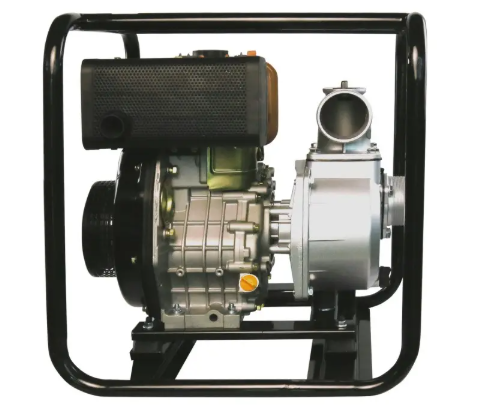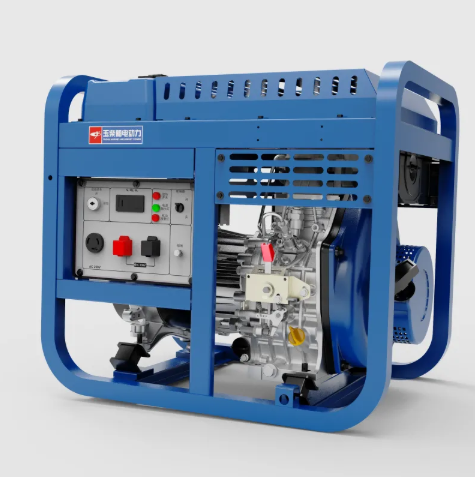왜 산업 부문이 디젤 발전기를 사용하는가
시장 성장: 2029년까지 디젤 발전기 시장 규모 234억 달러 예상
디젤 발전기 수요는 계속 증가하고 있으며, 시장 전망에 따르면 2029년까지 약 234억 달러에 이를 것으로 예상됩니다. 왜 그럴까요? 바로 이러한 장비들이 다양한 산업 현장에서 신뢰할 수 있는 전력을 안정적으로 공급한다는 점이 반복적으로 입증되고 있기 때문입니다. 공장이 대형화되고 보다 강력한 예비 전력 시스템이 필요해지면서 많은 기업들이 대체 옵션보다 디젤 발전기가 중단 없는 가동을 보장하는 데 더 효과적이라고 판단하고 있습니다. 이 수요 증가를 이끄는 요인은 무엇일까요? 바로 디젤 발전기가 전 세계 제조 현장에서 꾸준히 요구되는 강력하고 안정적인 에너지 공급을 충족함으로써 글로벌 산업 확장을 뒷받침하고 있다는 사실에서 그 답을 찾을 수 있습니다.
제조업에서 중단 없는 전력의 중요성
공장은 비용이 많이 드는 중단 없이 가동되기 위해 안정적인 전력을 필요로 합니다. 일부 업계 보고서에 따르면 정전이 발생하면 제조업체는 시간당 26만 달러 이상의 손실을 입을 수 있습니다. 이 때문에 많은 공장들이 예비 전원으로 디젤 발전기를 채택하고 있습니다. 이들 장비는 주전력망에 문제가 생기면 자동으로 작동하여 생산 라인을 가동 상태로 유지하고 핵심 시스템이 온라인 상태를 유지하도록 합니다. 납기를 지키고 수익을 보호하려는 기업들에게 이는 매우 효과적인 투자입니다. 예를 들어, 자동차 제조 공장은 종종 다교대 근무를 운영하며, 가동 중단은 주문 이행 실패와 고객 불만으로 이어질 수 있습니다.
아시아 태평양 지역의 산업용 발전기 채택 주도
아시아 태평양 지역은 여전히 글로벌 디젤 발전기 시장을 주도하고 있습니다. 이 지역의 산업이 급성장하고 도시 인구가 빠르게 증가하고 있기 때문입니다. 중국과 인도 같은 국가는 정부가 도로, 공장, 그리고 현대 경제에 필요한 모든 인프라 구축에 수십 억 달러를 투자해 왔습니다. 이 지역 많은 곳에서 전력망이 정전이나 전압 강하 문제를 겪고 있기 때문에, 가동 중단을 감수할 수 없는 기업들에게 예비 전력 시스템은 필수적입니다. 디젤은 아시아의 많은 지역에서 천연가스나 프로판과 같은 대체 연료에 비해 구하기가 쉽기 때문에 여전히 주요 연료로 자리 잡고 있습니다. 예를 들어, 인도네시아의 외딴 채굴 현장은 다른 연료를 운송하는 비용이 너무 많이 들기 때문에 종종 오직 디젤 발전기에만 의존합니다. 동남아시아 전역에 제조 거점이 확장되면서 이러한 든든한 기계에 대한 수요는 계속 증가하고 있으며, 이는 장비 공급업체에게 대규모 시장 기회를 제공하고 있습니다.
공장 운영에서 디젤 발전기의 주요 장점
극한 온도와 혹독한 환경에서의 24/7 내구성
디젤 발전기는 혹독한 환경에서도 견딜 수 있도록 설계되어 건설 현장, 광산, 석유 시추 장치 등에서 널리 사용되고 있습니다. 이러한 장비는 기온이 얼어붙을 정도로 추운 날씨에서부터 뜨거운 무더위까지, 또는 비나 눈이 오는 날씨에서도 안정적으로 작동합니다. 서부의 외진 유전이나 북극 지역의 얼어붙은 땅에서 진행되는 채굴 프로젝트를 생각해보면, 이러한 발전기는 하루 종일 꾸준한 전력을 공급하여 현장이 멈추지 않고 계속해서 가동될 수 있도록 합니다. 왜 이들이 이렇게 귀중한 것일까요? 바로 다른 장비들이 비슷한 혹독한 상황에서 고장이 나더라도 디젤 발전기는 계속 작동하기 때문입니다. 현장 작업자들은 이를 직접 경험하고 있으며, 혹독한 기후에서 다른 전력 장치를 사용해보려는 시도는 대체로 실패로 이어지는 경우가 많습니다.
통합된 ATS 패널을 통한 그리드 실패 시 밀리초 단위 전환
지속적인 전력 공급에 의존하는 기업의 경우 짧은 정전조차도 허용할 수 없기 때문에 자동 전환 스위치(ATS) 패널은 필수적입니다. 주전원이 차단되면 이러한 시스템을 통해 디젤 발전기가 거의 즉시 전력망에서 가동되며, 운영이 중단되는 일이 없도록 해줍니다. 이 전환 속도는 매우 중요합니다. 많은 산업 현장에서 전력을 잃는다는 것은 곧 기계가 멈추고, 안전 위험 요소가 생기며 다양한 효율성 손실이 발생함을 의미하기 때문입니다. 제조 공장이나 병원의 경우를 예로 들 수 있습니다. 두 곳 모두 언제나 신뢰할 수 있는 전력 공급이 필수적입니다. ATS 패널을 디젤 발전기에 직접 연결함으로써 기업은 주전원이 고장날 때마다 번거로움 없이 백업 전력으로 전환해주는 중요한 안전 장치를 확보할 수 있습니다.
장기간 유지보수 간격을 위한 저 RPM 설계
저속 디젤 발전기는 정비 주기 측면에서 큰 이점을 가지고 있어 궁극적으로 성가신 운영 비용을 절감할 수 있습니다. 이 특정 모델들은 속도가 느린 상태에서도 충분히 잘 작동하기 때문에 시간이 지나도 본체에 무리가 덜 갑니다. 내부 부품에 가해지는 부담이 적기 때문에 구성 요소들의 수명이 더 깁니다. 정비 비용이 크게 줄어들며 전체 장비가 몇 달이 아니라 몇 년 동안 사용할 수 있습니다. 이 타입의 발전기로 전환한 공장들은 장기적으로 비용을 절감할 수 있는 경우가 많습니다. 제조사가 운영을 원활하게 유지하면서도 예산을 크게 초과하지 않으려 할 때, 대부분의 산업 환경에서는 저속 RPM 기술에 투자하는 것이 매우 합리적인 선택이 됩니다.

산업급 신뢰성을 위한 기술 사양
견고한 엔진 구조: 지속적인 부하 요구에 대비하여 설계됨
산업용으로 제작된 디젤 발전기는 꾸준한 부하를 견딜 수 있는 강력한 엔진 설계를 갖추고 있으며, 제조업체와 발전소에서 항상 필요로 하는 특성입니다. 이러한 장비들의 조립 방식은 조건이 변동하더라도 전력 공급이 끊기거나 고장이 발생하지 않도록 하여 장비가 계속 원활하게 작동할 수 있도록 보장합니다. 가동을 멈추는 것이 막대한 금전적 손실을 초래하는 산업 현장에서는 이러한 신뢰성이 특히 중요합니다. 자동차 부품을 제조하는 공장이나 24시간 내내 원유를 정제하는 석유 정제 공장을 예로 들어볼 수 있습니다. 이러한 시설에서는 디젤 발전기의 문제로 인해 시스템이 멈추는 상황을 감수할 수 없습니다. 그래서 생산 라인의 가동을 유지하고 다양한 산업 분야에서 일관된 에너지 출력을 보장하기 위해 신뢰할 수 있는 디젤 발전기는 여전히 매우 중요합니다.
중량 기계 가동 시 발생하는 전압 안정성
산업용 디젤 발전기는 전압을 안정적으로 유지하는 기능 때문에 주목받습니다. 유압 프레스와 같은 대형 기계가 작동할 때 급격한 전력 소모로 인해 전압이 갑자기 떨어지는 현상이 발생할 수 있습니다. 이러한 전압 강하는 공장 내 민감한 전자기기와 제어 시스템에 심각한 영향을 미칠 수 있습니다. 전압 수준을 일정하게 유지함으로써 발전기는 고가의 장비를 손상으로부터 보호합니다. 이러한 안정성은 시간과 비용이 소요되는 작업 중단 없이 일관되고 원활한 운영이 가능하도록 도와줍니다.
원격 텔레메트리 예측 고장 분석
원격 계측 기능을 디젤 발전기에 추가하면 실시간으로 상황을 모니터링하고 문제 발생 전에 잠재적 문제를 조기에 발견하는 데 상당한 이점을 얻을 수 있습니다. 이러한 시스템은 발전기의 다양한 성능 데이터와 운전 상태를 지속적으로 감시하므로, 장비가 고장 나기 훨씬 전에 운영자에게 경고 신호를 보낼 수 있습니다. 사전에 정비를 계획할 수 있게 되면서 기업은 긴급 수리 비용을 절감하고, 예기치 못한 정전으로 인한 가동 중단을 방지할 수 있습니다. 백업 전원으로 가동되는 많은 산업 시설들에 있어서 이러한 예방적 접근 방식은 원활한 운용과 비용 손실 사이의 차이를 만들어냅니다. 원격 계측 기술로의 전환은 디젤 발전기 관리에서 획기적인 발전 단계를 의미하며, 장기적으로 기업들이 신뢰성 높은 전력을 유지하면서 비용을 절감할 수 있도록 도와줍니다.
글로벌 배출 규제 준수
EPA Tier 4 Final 및 EU Stage V 규정 안내
디젤 발전기를 계속 운용하려면 EPA Tier 4 Final 및 EU Stage V 기준을 충족하는 것이 필수적이게 되었습니다. 특히 환경 규제가 점점 더 강화되고 있는 상황에서 이러한 요구사항을 준수하는 것은 중요합니다. 이러한 규제의 주요 목적은 발전기 배기가스에서 배출되는 질소산화물(NOx) 및 미세입자와 같은 유해 물질을 줄이는 데 있습니다. 기업이 이러한 규정을 따름으로써 막대한 벌금과 부정적인 여론을 피할 수 있을 뿐만 아니라, 깨끗한 에너지 옵션의 발전에도 기여하게 됩니다. 이제 단순히 규정 준수를 넘어, 기업들이 이윤 추구와 친환경 실천 사이의 균형을 맞추려는 움직임이 전 산업계에 확산되고 있는 큰 흐름 속에 있는 것이라 할 수 있습니다.
현대 산업용 발전기의 NOx 저감 시스템
오늘날 산업용 디젤 발전기에는 작동 시 질소 산화물 배출을 줄이는 고도의 NOx 저감 시스템이 장착되어 있습니다. 이러한 시스템은 일반적으로 선택적 촉매 환원(SCR) 방식과 배기가스 재순환(EGR) 기술을 사용합니다. 이러한 기술들이 하는 역할은 결국 유해한 오염 물질을 대기 중에서 보다 안전한 물질로 전환시키는 것입니다. 많은 기업들이 규제 기관의 요구사항 때문만 아니라 친환경 경영이 전략의 일환으로 자리 잡았기 때문에 이러한 기술을 도입하고 있습니다. 이와 같은 변화를 실시한 기업들은 단순히 기준을 충족하는 것을 넘어서 고객과 이해관계자들로부터의 신뢰도 향상이라는 혜택도 얻고 있습니다. 게다가 장기적으로는 배출 감소를 통해 비용 절감 효과도 얻을 수 있으며 운영에 필요한 요구사항을 해치지 않으면서 지속 가능성 목표를 뒷받침할 수 있습니다.
탄소 배출량 감소를 위한 HVO 연료 호환성
최신 디젤 발전기 중에는 하이드로트리티드 식물성 오일(HVO)이라는 연료로 작동하는 제품들이 많다. 이는 기업이 장비를 완전히 교체하지 않고도 탄소 배출을 줄일 수 있는 또 다른 방법이 된다. HVO의 특별한 점은 우리가 이미 생산하고 있는 식물성 오일과 동물성 지방 부산물과 같은 원료에서 유래한다는 것이다. 일반 디젤 연료와 비교할 때 HVO는 훨씬 깨끗하게 연소되며 유해 배출물도 적게 발생한다. 이 연료의 가장 큰 장점은 전환 과정이 매우 용이하다는 점이다. 대부분의 기존 엔진은 HVO를 사용하려고 해도 대규모 개조가 필요하지 않기 때문에, 기업은 비용을 절감하면서도 친환경 운영으로 전환하는 데 성큼 다가설 수 있다. 배출 기준이 점점 더 엄격해지고 있는 상황에서, 대체 연료인 HVO를 사용할 수 있는 디젤 발전기는 오늘날의 경쟁 시장에서 생존하기 위한 기업들에게 점점 더 중요해질 전망이다.
가동 시간 최대화를 위한 유지 보수 전략
습식 축적 방지를 위한 로드 뱅크 테스트 프로토콜
부하 은행 테스트는 특히 정기적으로 사용되지 않는 디젤 발전기의 원활한 작동을 유지하는 데 중요한 역할을 합니다. 이러한 테스트를 수행하는 주요 이유는 웻 스태킹(wet stacking) 현상을 방지하기 위해서입니다. 웻 스태킹은 남아 있는 연료가 매연과 섞여 시간이 지남에 따라 엔진 및 배기 시스템 내부에 쌓이는 현상입니다. 기술자들은 일반적으로 테스트 중에 발전기를 최대 부하 상태에서 수시간 동안 가동합니다. 엔진이 충분히 뜨거워지면 그때까지 쌓여 있던 오염물질들이 모두 타버리게 됩니다. 정기적인 부하 은행 테스트는 엔진의 올바른 작동을 유지하고, 수명을 크게 연장하며, 특히 가장 필요할 때 성능을 보장하는 데 도움이 됩니다.
조기 부품 마모 탐지용 오일 분석 프로그램
윤활유 분석 프로그램은 디젤 발전기를 예기치 못한 고장으로부터 보호하기 위한 최선의 방법 중 하나입니다. 이 프로그램의 기본 개념은 엔진 내부의 상태를 점검하기 위해 연간 정기적으로 샘플을 채취하는 것입니다. 기술자들이 오일을 면밀히 분석하면 금속 입자와 같은 부품 마모의 징후나 불완전한 씰로 인한 수분 오염 등의 다양한 경고 신호를 발견할 수 있습니다. 이러한 문제를 조기에 발견하면 정비 담당자는 비상 상황을 해결하기 위해 급하게 움직이는 대신, 보다 편리한 시기에 수리 일정을 잡을 수 있습니다. 대부분의 시설에서는 정기 유지보수 루틴의 일환으로 몇 달 간격으로 이러한 테스트를 실시합니다. 그 결과는? 발전기가 중요한 작업 도중 예상치 못한 다운타임으로 인해 비용이 발생하는 일이 없이, 필요한 전력 공급 요구에 신뢰성 있게 대응할 수 있게 됩니다.
생산 주기와 연계된 예정된 대수리
정비 작업이 정상 가동에 지장을 주어서는 안 되므로, 오버홀 일정을 생산 사이클과 일치시키는 것이 바람직합니다. 기업들이 느린 시기에 주요 수리 계획을 세우면 가동 중단으로 인한 시간 손실을 줄이고 전반적으로 운영 효율을 유지할 수 있습니다. 이를 통해 발전기의 신뢰성을 유지하면서도 사업이 중대한 차질 없이 계속해서 진행될 수 있습니다. 장비 유지보수와 제조 수요 간의 타이밍을 조절하는 것은 단순히 고장을 피하는 것에만 국한되지 않습니다. 이 균형점을 잘 맞추는 공장일수록 예기치 못한 정지가 적고 시설 전반에서 높은 수준의 생산성을 유지하는 경향이 있습니다.
미래를 대비한 산업용 전력 시스템
하이브리드 시스템: 태양광과 디젤 백업의 통합
태양광 패널이 디젤 발전기와 함께 사용될 때, 기업은 유연성과 지속 가능성이라는 두 가지 큰 이점을 동시에 얻을 수 있는 하이브리드 시스템을 도입할 수 있습니다. 이러한 구성은 기업이 기존의 화석 연료에 의존하는 정도를 줄여 탄소 배출량 감소와 더불어 점점 증가하는 에너지 비용 절감에도 도움이 됩니다. 태양광은 말할 것도 없이 태양에서 오는 에너지이기 때문에 완전히 재생 가능한 자원입니다. 산업 현장에서는 햇빛이 부족한 날이나 갑작스럽게 수요가 급증했을 때 디젤 백업 시스템으로 전환함으로써 흐린 날씨에도 계속해서 전력을 공급받을 수 있습니다. 이렇게 두 가지 방식을 병행함으로써 단일 전력 공급원에 완전히 의존하지 않으면서 항상 안정적인 전력을 사용할 수 있게 됩니다. 또한, 이러한 방식은 운영을 보다 친환경적으로 전환하는 데 기여하면서도 일상적인 업무는 매일 원활하게 유지할 수 있습니다.
단기 부하 절감을 위한 BESS 결합
배터리 저장 장치를 디젤 발전기와 결합하는 것은 많은 시설에서 전력 수요가 갑작스럽게 증가할 때 이를 관리하는 스마트한 해결책이 됩니다. 이 시스템은 전력망에서 전기 요금이 가장 높을 때 비싼 전력을 구매하는 것을 줄여 비용을 절감해 줍니다. 기본적으로 이러한 배터리 시스템은 전기 요금이 저렴할 때 여유 전력을 흡수했다가 전기를 필요로 하는 시점에 저장된 전력을 다시 방출하는 방식으로 작동합니다. 이러한 조합이 효과적인 이유는 전체 전력망을 보다 안정적으로 운영하면서 에너지 비용을 절감할 수 있기 때문입니다. 시설에서는 이러한 방식을 통해 전력망의 수요 급증 시 발생하는 높은 수요 요금을 피함으로써 실질적인 비용 절감 효과를 얻을 수 있습니다.
에너지 집약적 시설을 위한 마이크로그리드 대응 준비
디젤 발전기는 대부분의 마이크로그리드 구성에서 거의 필수적인 구성요소이며, 특히 정전 또는 지역 내 비상 상황이 발생하더라도 계속 운영이 가능한 전력 백업이 필요한 대규모 제조 공장이나 병원과 같은 시설에 매우 중요합니다. 이러한 마이크로그리드 시스템에 통합되었을 때 해당 시설은 일반 전력망과 분리되어 독립적으로 운용될 수 있습니다. 디젤 발전기를 다른 재생 가능 에너지 원천과 결합하면 유연한 에너지 솔루션을 구축할 수 있어 기업이 친환경 목표를 달성하면서도 전력 수요를 효과적으로 관리할 수 있게 됩니다. 핵심은 이러한 하이브리드 시스템이 실제로 얼마나 유연하게 작동하는가에 있습니다. 이는 기업이 중요한 작업 중 갑작스러운 정전 사태를 겪지 않으면서도 장기적으로는 친환경 에너지 소비로 나아질 수 있다는 점에서 안정성을 제공합니다.
자주 묻는 질문
왜 산업 부문에서는 디젤 발전기를 선호할까요?
디젤 발전기는 신뢰성 있고 지속적인 전력 공급을 제공하기 때문에 산업 부문에서 선호됩니다. 이는 격자 고장 또는 전력 문제시 필수적입니다. 그들은 신뢰성, 내구성 및 지속적인 부하 요구를 처리하는 능력으로 알려져 있어 제조, 채굴 및 건설과 같은 산업에 이상적입니다.
아시아 태평양 지역은 디젤 발전기 채택에서 어떤 역할을 하나요?
아시아 태평양 지역은 빠른 산업 성장과 도시화로 인해 디젤 발전기 채택에서 선두를 달리고 있습니다. 중국과 인도와 같은 국가들은 제조업과 인프라에 크게 투자하고 있어 격자 불안정성이 일반적인 곳에서 안정적인 전력 솔루션을 제공하는 디젤 발전기에 대한 수요가 증가하고 있습니다.
디젤 발전기는 어떻게 유지 보수 비용 절감에 기여합니까?
저 RPM 설계 및 원격 텔레메트리와 같은 기술과 오일 분석 프로그램이 정비 간격을 연장하고 예측적 정비 정보를 제공하는 데 도움을 줍니다. 이는 하드웨어 마모를 줄이고, 가동 중단을 최소화하며, 장기적으로 유지보수 비용을 효과적으로 낮춥니다.

